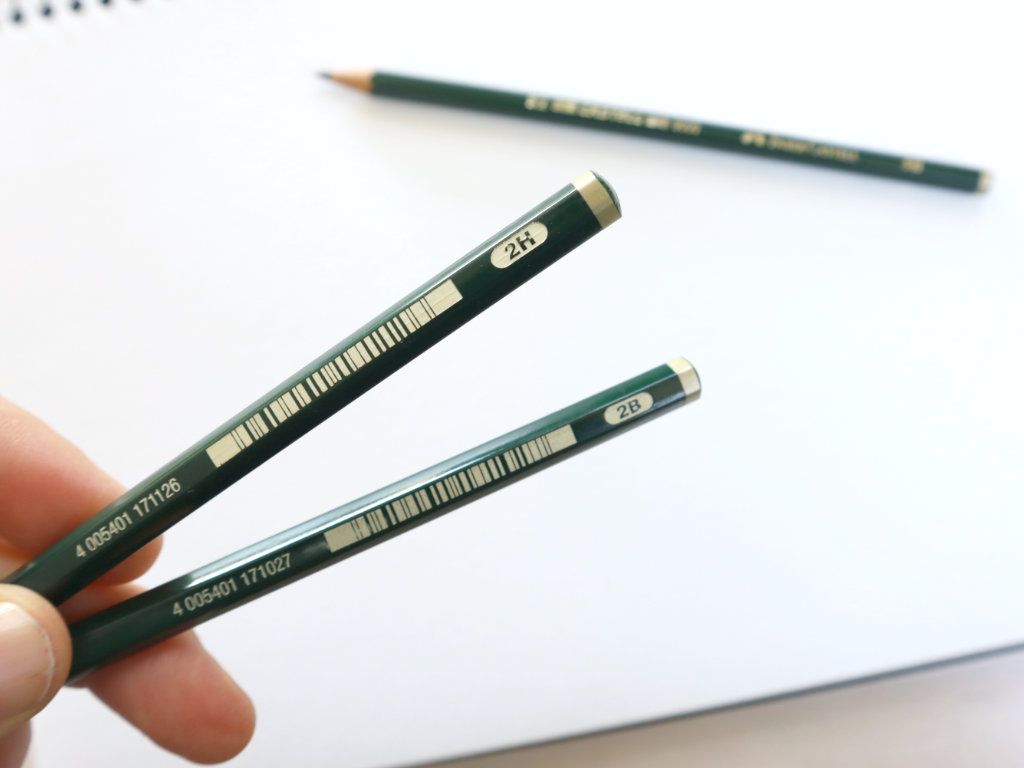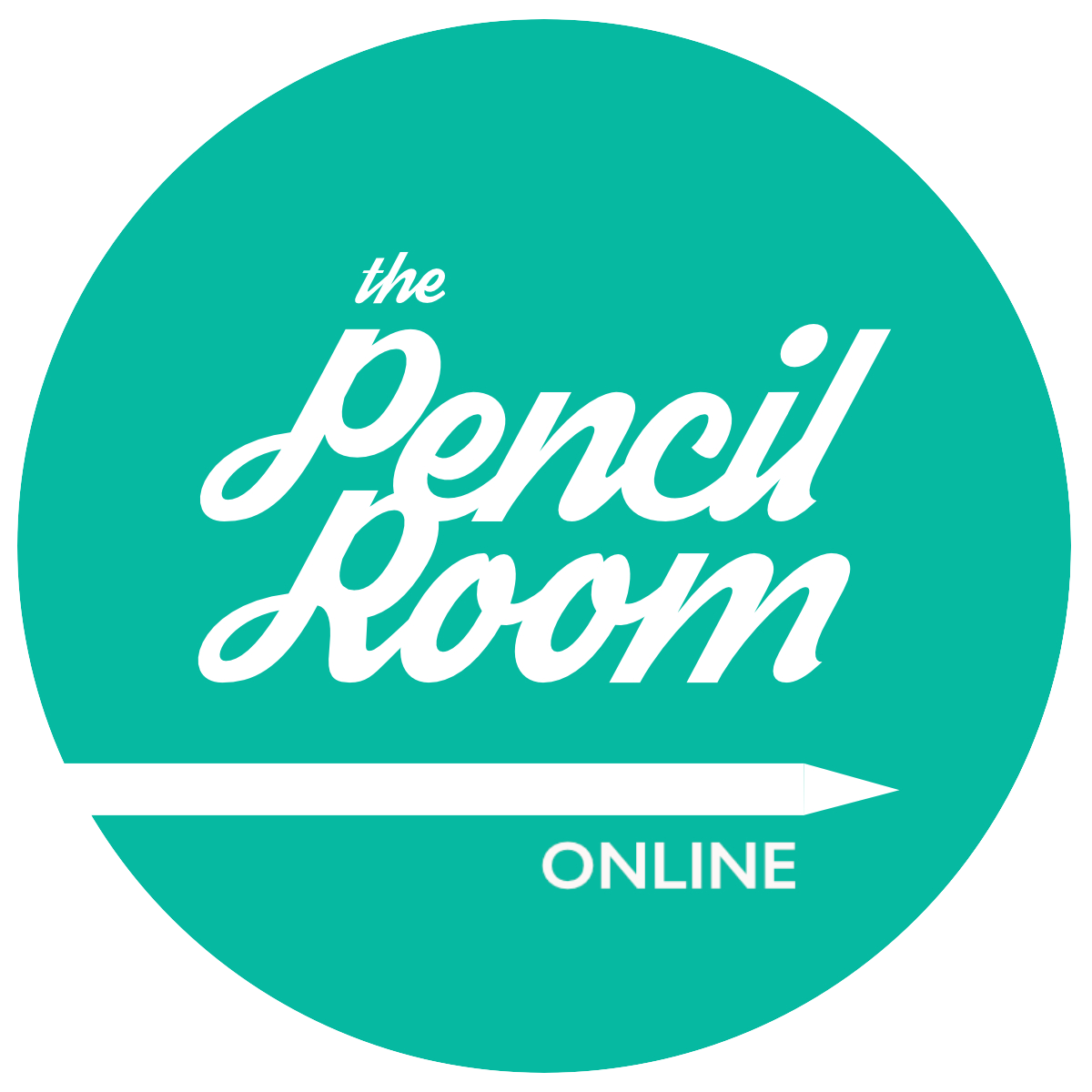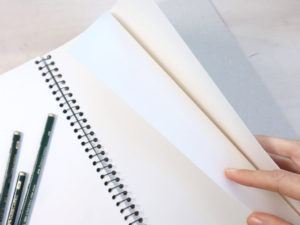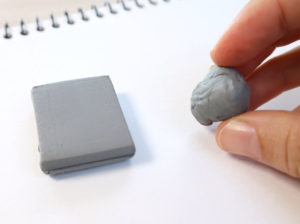What Materials Do You NEED To Learn To Draw?
Materials List:
- 3 pencils (2H, 2B, 6B)
- Quality drawing paper at least 60lb/90gsm
- Kneadable eraser
- Optional: Cotton bud/tissue for blending
Pencils
You can go out and buy a whole set of pencils but you don’t need them all. There are three pencil grades you need to be able to draw and shade light values and dark values. They are 2H, 2B and 6B (the grade is on the side of the pencil: H pencils are harder and lighter, B pencils are softer and darker).
Here are the three pencils I recommend getting for learning to draw:

A 2H pencil is useful for sketching at the start of a drawing. It’s very light which means you can erase it easily.
You’ll need a 2B pencil to use as a general drawing pencil. It can get darker greys than a 2H pencil so it is good for both sketching and shading.
The third pencil I recommend getting is a 6B pencil. This grade is very soft and dark. It’s not ideal for sketching but it is good for getting black values at the later stage of your drawing.
These three pencils allow you to sketch and shade all the values from very light to very dark! Now, what brand you choose is personal preference but I’d recommend buying a recognised art brand. Don’t buy a non brand set from a 99c store or $2 shop because you don’t know what you are getting. Single pencils from Faber Castell, Staedtler, Derwent are good quality and will only cost you $1-$2 each
Paper / Sketchbook
Size: Choose a size that feels right for you but don’t go too small unless it is for travel and portability. The most useful size in my experience is A4 (210 x 297mm) or 8.5 x 11 inches is a similar size available in America. It’s big enough to draw full size portraits in but it can still fit in a bag. However if you will only be using a sketchbook at your desk then you might prefer a larger size such as A3 (297 x 420mm). The similar American size is 11 x 14 inches.
Let’s Talk About Paper:
Eraser
The best eraser for drawing is a putty eraser, also called a kneaded eraser. Here’s why:
• A putty eraser is cleaner than a plastic eraser which can smudge your work. If it gets dirty, just squish it up again.
• It can be moulded into any shape to match the size of the area you need to erase.
• It ‘picks up’ unwanted pencil rather than pushing and rubbing the graphite around the paper.
• It doesn’t smudge and it doesn’t leave those annoying bits of rubber on your page!
Blending
You may have seen paper blending stumps before. They are used to blend out your shading marks to get smooth values. But, I don’t recommend blending stumps for people who are learning to draw! They are difficult to use well and beginners tend to overuse them to cover up a lack of shading skills. Instead, beginners should work on learning how to shade smooth transitions using just a pencil. If you do want to sparingly smudge your shading, a Q-tip works well for small areas and a tissue or toilet paper can be used for large areas.
Pencil Sharpener
The one other thing you’ll need is a pencil sharpener and most people have one of these lying around at home. A metal one is much sturdier than a plastic one but as long as it sharpens your pencil it doesn’t really make much of a difference!
I hope this gives you a place to start when you are searching for drawing materials. If you want to get started with some simple drawing exercises, check out this video on my Youtube channel, it’s easy and fun! Easy Drawing Exercises For Beginners


